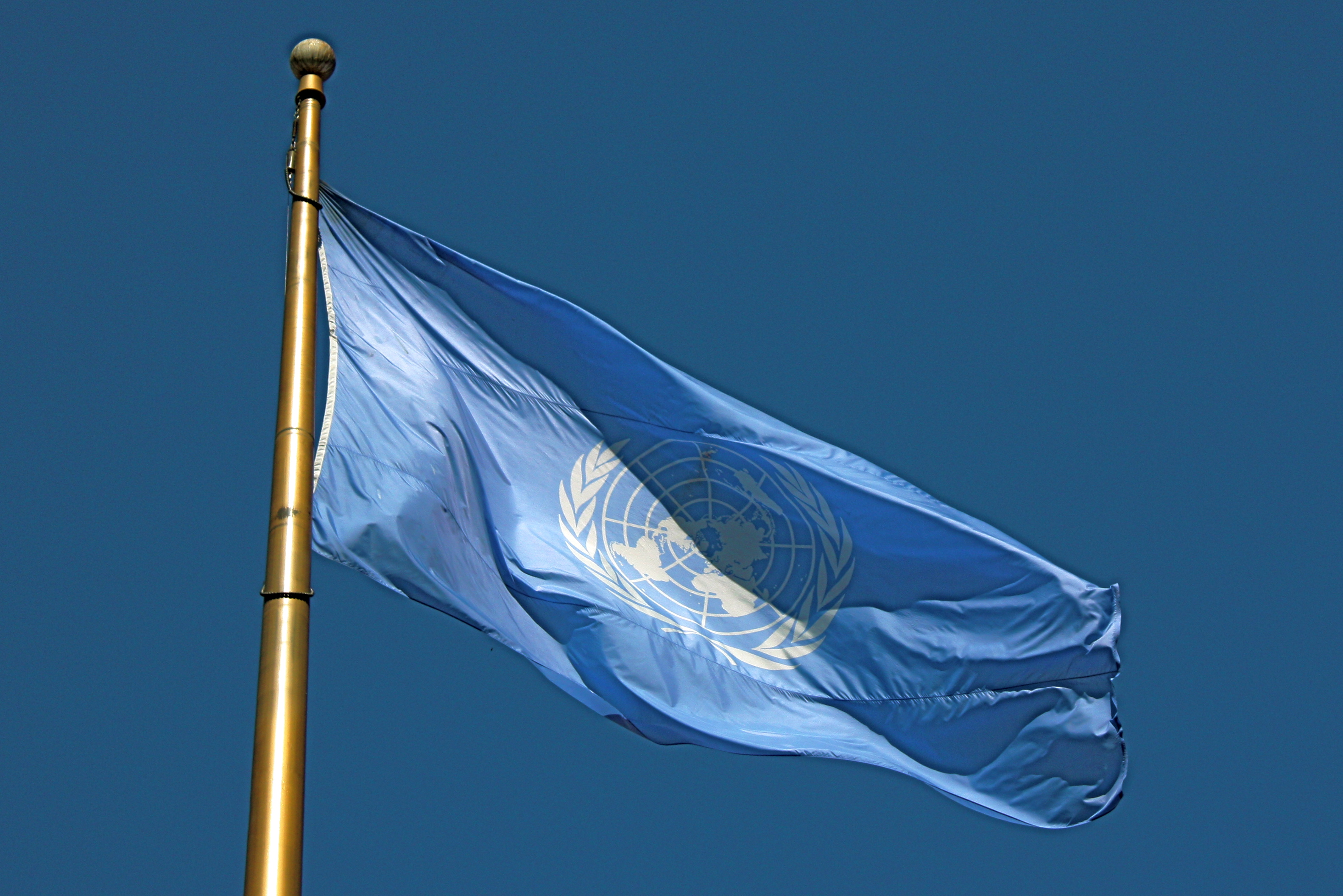|
Prisoners' Rights In International Law
Prisoners' rights in international law are found in a number of international treaties. For the most part these treaties came into existence following the World Wars, two World Wars and the body of law continues to be added to and amended. History The events of World War I and World War II had a profound effect on international law due to the widespread denial of civil rights and liberties on the basis of racial, religious, and political discrimination. The systematic use of violence, including murder and ultimately genocide, the use of slave labor, abuse and murder of prisoners of war, deportations, and confiscation of property forced changes to the status quo. Over the proceeding decades, large scale changes began to occur in all areas of international law, and prisoners’ rights were no exception. Now, there are international instruments * the European Convention on Human Rights, * the European Convention for the Prevention of Torture and Inhuman or Degrading Treatment or Puni ... [...More Info...] [...Related Items...] OR: [Wikipedia] [Google] [Baidu] |
Prisoners' Rights
The rights of civilian and military prisoners are governed by both national and international law. International conventions include the International Covenant on Civil and Political Rights; the United Nations' Minimum Rules for the Treatment of Prisoners, the European Committee for the Prevention of Torture and Inhuman or Degrading Treatment or Punishment, and the Convention on the Rights of Persons with Disabilities. Rights and advocacy by country Asia * Prisons in India * Human rights in the Islamic Republic of Iran ** Committee for the Defense of Prisoners' Rights (Iran) ** 2010 Iranian political prisoners' hunger strike for prisoners' rights * Human rights in China ** Penal system in China ** Laogai ** Xinjiang re-education camps ** Notable prisons: *** Qincheng Prison *** Tilanqiao Prison * Penal system of Japan * Malaysian Prison Department ** Caning in Malaysia ** 2020 Malaysia movement control order * Human rights in North Korea **Prisons in North Korea ** Kwa ... [...More Info...] [...Related Items...] OR: [Wikipedia] [Google] [Baidu] |
Standard Minimum Rules For The Treatment Of Prisoners
The United Nations Standard Minimum Rules for the Treatment of Prisoners were adopted by the United Nations General Assembly on 17 December 2015 after a five-year revision process. They are known as the Mandela Rules in honor of the former South African President, Nelson Mandela. The Mandela Rules are composed of 122 "rules". Not all are rules, but some are principles such as institutional equality and the philosophy of confinement. Background The rules were first adopted on 30 August 1955 during a UN Congress on the Prevention of Crime and the Treatment of Offenders, held at Geneva, and approved by the Economic and Social Council in resolutions of 31 July 1957 and 13 May 1977. Since their adoption by the Economic and Social Council in 1957, the Standard Minimum Rules for the Treatment of Prisoners (SMR) have served as the universally acknowledged minimum standards for the treatment of prisoners. Despite their legally non-binding nature, the rules have been important worl ... [...More Info...] [...Related Items...] OR: [Wikipedia] [Google] [Baidu] |
Military Aircraft
A military aircraft is any fixed-wing or rotary-wing aircraft that is operated by a legal or insurrectionary armed service of any type. Military aircraft can be either combat or non-combat: * Combat aircraft are designed to destroy enemy equipment or personnel using their own aircraft ordnance. Combat aircraft are typically developed and procured only by military forces. * Non-combat aircraft are not designed for combat as their primary function, but may carry weapons for self-defense. These mainly operate in support roles, and may be developed by either military forces or civilian organizations. History Lighter-than-air In 1783, when the first practical aircraft (hot-air and hydrogen balloons) were established, they were quickly adopted for military duties. The first military balloon unit was the French Aerostatic Corps, who in 1794 flew an observation balloon during the Battle of Fleurus, the first major battle to feature aerial observation. Balloons continued to be use ... [...More Info...] [...Related Items...] OR: [Wikipedia] [Google] [Baidu] |
Laws And Customs Of War
The law of war is the component of international law that regulates the conditions for initiating war (''jus ad bellum'') and the conduct of warring parties (''jus in bello''). Laws of war define sovereignty and nationhood, states and territories, occupation, and other critical terms of law. Among other issues, modern laws of war address the declarations of war, acceptance of surrender and the treatment of prisoners of war; military necessity, along with ''distinction'' and ''proportionality''; and the prohibition of certain weapons that may cause unnecessary suffering. The ''law of war'' is considered distinct from other bodies of law—such as the domestic law of a particular belligerent to a conflict—which may provide additional legal limits to the conduct or justification of war. Early sources and history The first traces of a law of war come from the Babylonians. It is the Code of Hammurabi, king of Babylon, which, 2000 B.C., explains its laws imposing a code of con ... [...More Info...] [...Related Items...] OR: [Wikipedia] [Google] [Baidu] |
Command Responsibility
Command responsibility (superior responsibility, the Yamashita standard, and the Medina standard) is the legal doctrine of hierarchical accountability for war crimes.Guilty Associations: Joint Criminal Enterprise, Command Responsibility, and the Development of International Criminal Law by Allison Marston Danner and Jenny S. Martinez, September 15, 2004 by Robin Rowland, CBC News Online, 6 May 2004 The legal doctrine of command responsibility stipulates that a superior officer (military commander or civilian leader ... [...More Info...] [...Related Items...] OR: [Wikipedia] [Google] [Baidu] |
Military Occupation
Military occupation, also known as belligerent occupation or simply occupation, is the effective military control by a ruling power over a territory that is outside of that power's sovereign territory.Eyāl Benveniśtî. The international law of occupation. Princeton University Press, 2004. , , p. 43 The territory is then known as the ''occupied'' territory and the ruling power the ''occupant''. Occupation is distinguished from annexation and colonialism by its intended temporary duration. While an occupant may set up a formal military government in the occupied territory to facilitate its administration, it is not a necessary precondition for occupation. The rules of occupation are delineated in various international agreements, primarily the Hague Convention of 1907, the Geneva Conventions of 1949, as well as established state practice. The relevant international conventions, the International Committee of the Red Cross (ICRC) Commentaries, and other treaties by military scho ... [...More Info...] [...Related Items...] OR: [Wikipedia] [Google] [Baidu] |
Resistance Movements
A resistance movement is an organized effort by some portion of the civil population of a country to withstand the legally established government or an occupying power and to disrupt civil order and stability. It may seek to achieve its objectives through either the use of nonviolent resistance (sometimes called civil resistance), or the use of force, whether armed or unarmed. In many cases, as for example in the United States during the American Revolution, or in Norway in the Second World War, a resistance movement may employ both violent and non-violent methods, usually operating under different organizations and acting in different phases or geographical areas within a country. Etymology The Oxford English Dictionary records use of the word "resistance" in the sense of organised opposition to an invader from 1862. The modern usage of the term "Resistance" became widespread from the self-designation of many movements during World War II, especially the French Resistance. The ter ... [...More Info...] [...Related Items...] OR: [Wikipedia] [Google] [Baidu] |
Military Volunteer
A military volunteer (or ''war volunteer'') is a person who enlists in military service by free will, and is not a conscript, mercenary, or a foreign legionnaire. Volunteers sometimes enlist to fight in the armed forces of a foreign country, for example during the Spanish Civil War. Military volunteers are essential for the operation of volunteer militaries. Many armies, including the U.S. Army, formerly distinguished between "Important Volunteers" enlisted during a war, and " regulars" who served on long-term basis. United States In the United States troops raised as state militia were always described as "volunteers", even when recruited by conscription. Both US volunteers and regulars were referred to as "U.S." troops. The rank of an officer in a volunteer unit was separate from his rank (if any) as a regular, and usually higher. When the volunteer forces were disbanded at the end of the war, officers with both kinds of commission reverted to their "regular" rank. For insta ... [...More Info...] [...Related Items...] OR: [Wikipedia] [Google] [Baidu] |
Militias
A militia () is generally an army or some other fighting organization of non-professional soldiers, citizens of a country, or subjects of a state, who may perform military service during a time of need, as opposed to a professional force of regular, full-time military personnel; or, historically, to members of a warrior-nobility class (e.g. knights or samurai). Generally unable to hold ground against regular forces, militias commonly support regular troops by skirmishing, holding fortifications, or conducting irregular warfare, instead of undertaking offensive campaigns by themselves. Local civilian laws often limit militias to serve only in their home region, and to serve only for a limited time; this further reduces their use in long military campaigns. Beginning in the late 20th century, some militias (in particular officially recognized and sanctioned militias of a government) act as professional forces, while still being "part-time" or "on-call" organizations. For instan ... [...More Info...] [...Related Items...] OR: [Wikipedia] [Google] [Baidu] |
Armed Forces
A military, also known collectively as armed forces, is a heavily armed, highly organized force primarily intended for warfare. It is typically authorized and maintained by a sovereign state, with its members identifiable by their distinct military uniform. It may consist of one or more military branches such as an army, navy, air force, space force, marines, or coast guard. The main task of the military is usually defined as defence of the state and its interests against external armed threats. In broad usage, the terms ''armed forces'' and ''military'' are often treated as synonymous, although in technical usage a distinction is sometimes made in which a country's armed forces may include both its military and other paramilitary forces. There are various forms of irregular military forces, not belonging to a recognized state; though they share many attributes with regular military forces, they are less often referred to as simply ''military''. A nation's military may ... [...More Info...] [...Related Items...] OR: [Wikipedia] [Google] [Baidu] |
Third Geneva Convention
The Third Geneva Convention, relative to the treatment of prisoners of war, is one of the four treaties of the Geneva Conventions. The Geneva Convention relative to the Treatment of Prisoners of War was first adopted in 1929, but significantly revised at the 1949 conference. It defines humanitarian protections for prisoners of war. There are 196 state parties to the Convention. Part I: General provisions This part sets out the overall parameters for GCIII: * Articles 1 and 2 cover which parties are bound by GCIII * Article 2 specifies when the parties are bound by GCIII ** That any armed conflict between two or more "High Contracting Parties" is covered by GCIII; ** That it applies to occupations of a "High Contracting Party"; ** That the relationship between the "High Contracting Parties" and a non-signatory, the party will remain bound until the non-signatory no longer acts under the strictures of the convention. "...Although one of the Powers in conflict may not be a pa ... [...More Info...] [...Related Items...] OR: [Wikipedia] [Google] [Baidu] |

.jpg)



